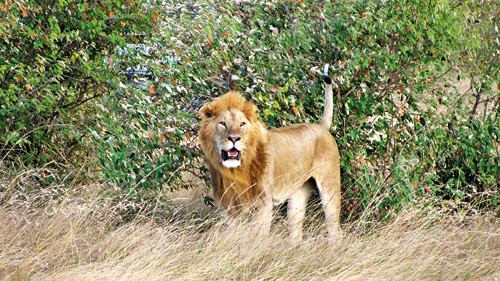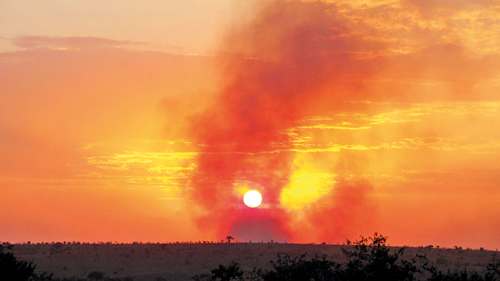A Serengeti experience

The King of the jungle in all his majesty
Spreading over 15,000 square kilometres in the northern part of Tanzania and extending into southern Kenya (where it is referred to as the Masai Mara), the vast plains of the UNESCO World Heritage Serengeti National Park constitute one of the most impressive wildlife reserves in the world.
It is an immense expanse of savannah grassland that epitomises all that one would imagine the African wild to be. The views are immensely wide, the biological diversity exceptionally high, and the wild animals absolutely amazing.
We made our visit to the Serengeti through Kenya, having flown into Nairobi (NBO)via Abu Dhabi on Etihad and then crossed the land border between Kenya and Tanzania at the frontiertown of Isibanya. This required us to get visas for both countries Kenya and Tanzania. However one can travel directly to Tanzania from Colombo – to Dar Es Salaam International Airport (DAR) via Dubai on Emirates or to Kilimanjaro International Airport (JRO) via Doha on Qatar Airways.

A Serengeti sunset
Once in Tanzania, you can get a domestic flight to Arusha, the nearest domestic airport to the Serengeti and either drive from there (the trip takes about four to five hours) or take a small single engine-plane from Arusha to one of the many airstrips in the park.
The best way to enjoy the Serengeti is to book a safari with a Tanzanian company through a local travel agent. This will provide you with a vehicle and driver/guide plus pre-booked accommodation which is much easier than trying to organise it yourself. The extra cost is well worth it.
The national park is a wonderful place to see plenty of animals and birds in their natural habitat –from the impressive African elephant with huge fan shaped ears and massive buffalo with mighty horizontally swung horns to the ungainly wildebeest, graceful zebra, tall giraffe, majestic lion, peaceful hippotamus and the rare rhinoceros.
Within the National Park is the 8000 square kilometre Ngorongoro Conservation Area – a specially protected area which contains the world’s largest caldera, the spectacular Ngorongoro Crater. This is not really a crater but a natural feature created after a volcano erupted and discharged all its contents, allowing the land around the volcano to collapse inwardly and create a massive bowl-shaped depression known as a Caldera.Over the years flora and fauna have flourished within this caldera and now with food being plentiful the place teems with a rich variety of wildlife such as zebras, wildebeest, warthogs, deer, lions and elephants. All these animals have to do is to spend their time eating, sleeping, reproducing –and occasionally being eaten.
Another highlight of the Serengeti is the Olduvai Gorge, the place where anthropologists Louis and Mary Leakey made their momentous discovery of hominid fossils. The gorge holds the earliest evidence of the existence of human ancestors. Hundreds of fossilised bones and stone tools dating back over a million years have been found here, allowing scientists to draw the conclusion that humans evolved in Africa.While in this area, it is worth visiting the Olduvai Gorge Museum, originally set up by Mary Leakey but today maintained by the Tanzanian government. Recently refurbished, it is well set out and explains much about the history of early man.
Plenty of animals, beautiful scenery and breath-taking sunsets at the end of the day– all a part of the Serengeti experience.


